Effective trade marketing collateral is much more than eye-catching brochures and glossy product sheets. True conversion boosters are those B2B marketing materials that not only inform, but guide decision-makers through every stage of their buying journey, building trust, showcasing solutions, and supporting sales with real expertise. Whether convincing a new distributor, partnering with a retailer, or supplying another business, creating the right collateral can make or break your success rates.
What Are B2B Marketing Materials and Why Do They Matter?
B2B marketing materials are any assets – physical or digital – that deliver your brand value, educate leads, and support sales. In B2B, this collateral isn’t just advertising, it’s a toolkit for nurturing relationships, answering technical questions, and proving business impact. According to industry research, 63% of B2B buyers surveyed make decisions based on the quality and clarity of the materials they receive. Branded, targeted collateral ensures your proposition is both memorable and credible.
Trade marketing collateral for B2B includes brochures, proposals, product catalogs, pitch decks, case studies, and explainer videos. It can also mean digital assets like interactive datasheets, whitepapers, and branded email templates. These materials are designed to reinforce your expertise and solve client pain points at every stage.
Core Elements of Effective B2B Marketing Materials
1. Know Your Audience and Their Needs
Before design begins, profile your ideal B2B clients. Understand their goals, challenges, decision cycles, and the typical objections they raise. This insight lets you tailor content, highlight relevant product features, and address unique pain points with authority.
2. Build a Cohesive Visual Identity
Consistency is key in B2B marketing materials. Unified use of brand colours, logos, fonts, and tone builds trust and lets clients easily identify your communication. Professional design instantly signals credibility and reliability. Many firms have reported increased engagement and faster deal closure after refreshing their branding across all collateral.
3. Create Solution-Focused Storytelling
Technical details matter, but stories convert. Use real client experiences, testimonials, or before-and-after project results. Supporting claims with facts, stats, and images builds authenticity, while step-by-step guides or walkthroughs make your offering tangible and relatable. B2B buyers value materials that answer not just “what?” but “how?” and “why?”
4. Blend Print and Digital for Impact
While much B2B marketing happens online, print collateral remains vital, especially for trade shows, events, and face-to-face meetings. High-quality brochures, proposal folders, and catalogues give business partners something to remember you by. QR codes on print collateral easily link to digital assets such as video demos or downloadable product spec sheets, creating a bridge between offline and online engagement.
5. Make Information Easy to Find and Actionable
Organise key details clearly: pricing, features, support, and contact details should be prominently displayed. Interactive PDFs, product one-pagers, and comparison charts make decision-making easier. Use clear calls-to-action (“Book a call”, “Download spec sheet”, or “Get a quote”) so busy business clients know exactly what to do next.
6. Personalise Where Possible
Tailored collateral, like custom proposal folders, branded email templates, or personalised white papers addressing a client’s pain point, performs far better than generic assets. Even subtle details such as specific sector references or photos of the partner’s products in use boost conversion rates.
Real Examples: B2B Marketing Materials in Action
- A UK building supplies firm saw a 47% increase in trade partner signups after producing personalised case studies and solution-focused datasheets for their segment.
- One manufacturer used interactive catalogs at trade shows, allowing visitors to instantly see product specs and place sample orders on tablets, resulting in twice the average order size compared to previous shows.
- Retailers consistently report that well-designed product brochures and explainer videos increase shelf space allocation and improve relationship longevity.
Step-by-Step Guide: Building High-Impact Trade Marketing Collateral
Step 1: Audit Current Collateral
Review what you’re using today. Survey recent B2B clients: what helped? What confused or annoyed? Use their feedback to spot gaps and strengths.
Step 2: Define Core Messages and Value Propositions
Tailor your messages to the most common goals and worries of your B2B buyers, cost efficiency, reliability, ROI, support, and flexibility.
Step 3: Outline the Buyer’s Journey
Map the questions and objections at each stage, from awareness to purchase. Develop collateral for every step, such as overview brochures (awareness), detailed datasheets and battle cards (consideration), then proposals and branded folders (decision).
Step 4: Design to Impress and Inform
Collaborate with design professionals to create unified materials. Use charts, infographics, and real-world images, not generic stock photos. Strong visuals aid retention and credibility.
Step 5: Integrate Digital Interactivity
Include QR codes, links, and interactive elements in both print and digital formats. Offer downloadable guides and videos to keep prospects engaged.
Step 6: Test & Iterate
Pilot your refreshed B2B marketing materials at trade events or in campaigns. Use analytics, feedback, and follow-up to tweak and optimise performance.
Unique Tips and Challenges
- Combine print and digital for multi-touch engagement: send a brochure in the post, follow up with a personalised email, and offer a custom video walk-through.
- Gather photos and testimonials from real buyers for use in your collaterals, particularly those that faced unique challenges and achieved measurable results with your offering.
- Avoid generic corporate jargon; instead, speak in the language of your client’s business and reference industry-specific use cases.
- Show collateral in action, photos or short clips of staff using product one-pagers at meetings, or trade show booths packed with branded proposal folders, build authenticity for your materials.
Common Mistakes to Avoid
- Overloading with text or technical data, buyers want clear, actionable insights.
- Inconsistent branding across pieces, this confuses and weakens perception.
- Relying solely on online assets, print remains powerful in trade.
- Neglecting post-sale collateral such as welcome packages, branded merchandise, and loyalty-building assets.
Why Good Collateral Makes B2B Partnerships Last
The highest-performing trade businesses treat their collateral as lasting business assets, not quick advertising fixes. Quality B2B marketing materials not only drive conversions but keep your brand top-of-mind, support client onboarding, and foster repeat contracts. Surveys show that trade partners presented with memorable, solution-driven collateral are 35% more likely to renew services or recommend your business.
Conclusion: The Trade Design Advantage
Creating effective trade marketing collateral that boosts B2B conversions is about understanding your partners, addressing real needs, and designing materials that educate and reassure. Authenticity, evidence, and visual appeal turn brochures and catalogues into silent salespeople.







